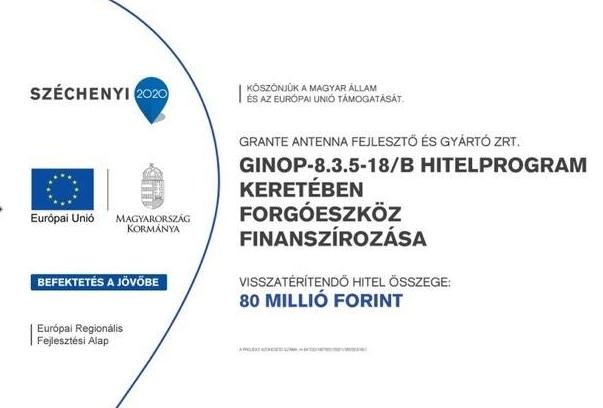Tenders
- Home
- Increasing Productivity in Extrusion 3D Printing
Increasing Productivity in Extrusion 3D Printing
6.3. Increasing Productivity in Extrusion 3D Printing
Beneficiary Name: GRANTE Antenna Development and Manufacturing Private Limited Company
Project Title: „Increasing Productivity in Extrusion 3D Printing”
Grant Amount: HUF 251,466,590
Grant Rate: 56.866493%
Project Description: Based on current global trends, it is inevitable that the industrial manufacturing culture will radically transform in the near future. The 20th-century technologies of mass production will be largely replaced by modern, customized products (massclusivity), significantly reducing the amount of plastic waste generated. The spread of thermoplastic materials in the 20th century gave rise to the mass production processes we know today, with injection molding being the most prevalent. This involves injecting plastic into a metal mold at high temperature and pressure to produce the final product. While productive under proper automation, this method has notable disadvantages:
- It requires a metal mold, which is time-consuming and costly to produce.
- There is no possibility for unique variations, as the product’s geometry is determined by the mold.
Thus, this method is not applicable in industrial product manufacturing, where quick and cost-effective product iterations are needed, nor in fields demanding high customization, such as healthcare. Partly in response to these challenges, the first 3D printing methods appeared in the 1980s, initially available only as industrial machines for a narrow market segment. 3D printing actually encompasses several additive manufacturing technologies (e.g., FDM, SLA, SLS, inkjet printing, binder jetting), which do not require molds, as the final product’s shape is built up layer by layer. These technologies have garnered significant attention from the beginning, especially with the advent of low-cost home and hobby 3D printers. Although the vision of ubiquitous household 3D printing has yet to materialize, the technology’s prevalence continues to grow in the industrial segment, which comprises 80-90% of the market. Small businesses also use it for prototyping needs. However, there are technological limitations that no manufacturer has yet effectively overcome, such as production speed.
For the dominant extrusion process (FDM) in 3D printing technologies, production speed has hardly increased in the past 30 years. For a typical palm-sized part, this means a layer-by-layer build time of 2-3 minutes or a total production time of 2-4 hours. For large, complex parts measuring 20x20x20 cm, production time can reach 36-48 hours. Our project aims to address this issue. We are developing and validating a 3D printer for marketability that drastically increases speed, at least doubling or even further enhancing the speed of current machines. We employ technological solutions unseen in the market today, protected by patents held by our company. Additionally, we aim to use available materials commonly used in FDM processes (e.g., easily processed PLA and PET, or technical ABS) in the new product to ensure industrial applicability of the produced final product.
We expect significant market potential for the new product, partly due to its market-creating potential. We anticipate achieving the production volumes of medium-sized FDM equipment manufacturers within five years of the product launch. We believe that effectively addressing these challenges will catalyze processes in the industry (replacing traditional manufacturing methods, increasing the prevalence and accessibility of 3D printing) that bring us closer to a world of personalized objects, machines, smart devices, and individual-specific medical treatments, where human diversity is reflected in our possessions.
Planned Project Completion Date: December 31, 2022
Project Identification Number: 2019-1.1.1-PIACI-KFI-2019-00093

